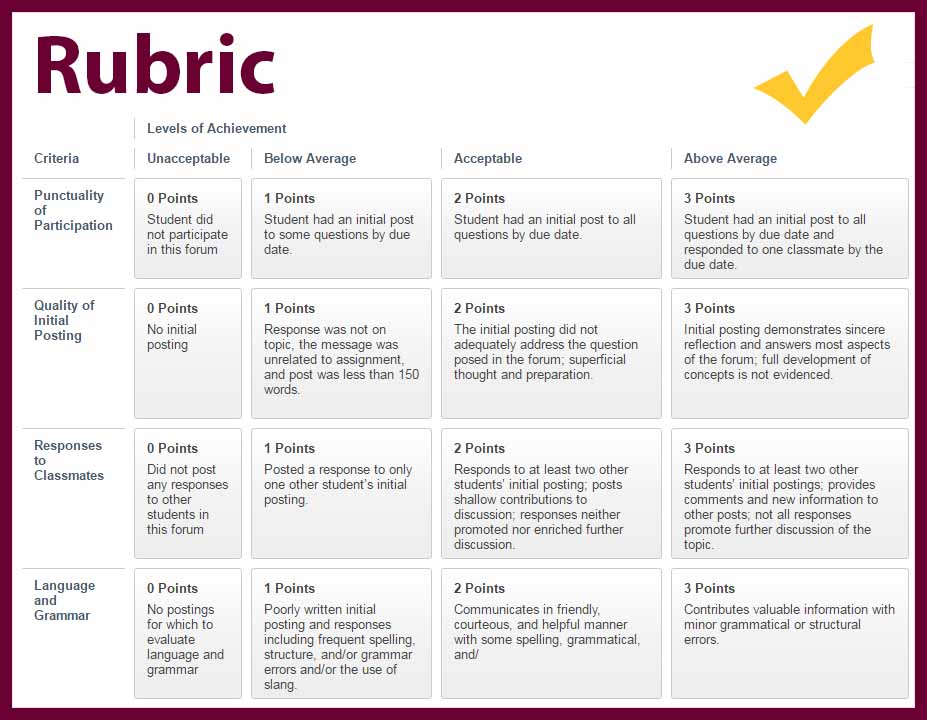Rubrics serve a two-fold purpose in supporting instruction by creating cohesion and ensuring consistency and efficiency in the evaluation process (Reitmer, Svendson & Vrchota, 2004). With consistent use and exposure of rubrics, learners can use them as guides for planning and focusing their effort, supporting reflection on feedback, and helping them to produce higher quality work (Atkinson & Lim 2013; Reddy & Andrade, 2010). There are two major types of rubrics:
Holistic rubrics assess the learner’s all overall competency in measuring quality and understanding of content. Holistic rubrics provide a short, summative overview of a learner’s performance using predefined achievement levels usually on a 4 or 5-point scale (e.g., 5= above average, 4= sufficient).
Analytic rubrics assess the learner’s mastery of a specified task (e.g., final paper) using listed criterion (e.g., 1=Needs improvement, 2=Developing) to showcase strengths and weaknesses. The way an analytic rubric separates a project into its major parts and provides rating criteria allows learners to ascertain which areas need improvement (Brown, Irving & Keegan, 2014).
The Center for Excellence in Teaching and Learning has created a repository that provides a place where faculty can share rubrics with peers and find other rubrics that support their teaching. The collection of rubrics available includes direct contributions from many CMU faculty*, each of whom graciously contributed their own rubrics, used in courses across the University.
While we have attempted to accurately categorize each rubric based upon what it is primarily designed to evaluate, the rubrics have not been vetted further and should be carefully reviewed and adapted to your unique situation, prior to use. Whenever possible, rubrics are listed in .ZIP format for import to Blackboard and .PNG format for print. Please click on the links below to browse the collection by category and download the resources that meet your needs.
*Special thanks to all faculty contributors, but especially those pioneers who were first to share their rubrics with the CMU community, including: Betsy VanDeusen, Wafa Hozien, Richard L. Hayes, Margaret Partlo, Michael Dillon, JoDell Heroux, Rick Ferkel, David Freed, Dawn Decker, Tierney Popp, Ben Jankens, Marlene VanDyke, Thomas Greitens, Andrea Jasper, and Meaghan McCollow.
References
Atkinson, D., & Lim, S. L. (2013). Improving assessment processes in higher education: Student and teacher perceptions of the effectiveness of a rubric embedded in a LMS. Australasian Journal of Educational Technology, 29(5), 651-666.
Brown, G., Irving, E., & Keegan, P. (2014). An introduction to educational assessment, measurement and evaluation. Auckland, NZ: Pearson Education.
Reitmeier, C.A., Svendsen, L.K. & Vrchota, D.A. (2004). Improving oral communication skills of students in food science courses. Journal of Food Science Education, 3(2), 15–20.

